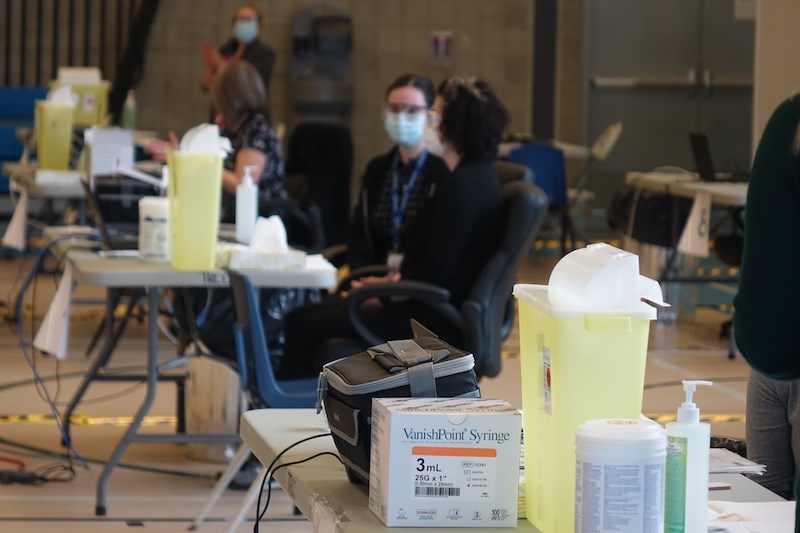Adults who live in the Inkster, Seven Oaks and St. Vital neighbourhoods or who work front-line jobs in these communities could soon be eligible to get a COVID-19 vaccine — if the province picks hot spots based on current caseloads in the capital.
Manitoba has announced plans to expand immunization criteria to include all first responders and residents aged 18 and older in designated areas with high transmission rates, as well as people who have “specified front-line, public-facing roles” in these locations.
While the province has used teachers as an example of eligible employees, specifics about both jobs and hot spots will be announced April 21.
If active cases per capita are any indication, residents in The Pas, Thompson, and in the northwest corner of Winnipeg will be next in line.
Health districts in Manitoba’s north account for the top 11 regions with the highest caseloads per 100,000 residents at present, but widespread vaccination efforts among adults in most of these communities are already underway because they are First Nations or adjacent to them.
The Pas and Thompson are the last of the two northern districts with high case counts.
In Winnipeg, Seven Oaks and River East have the highest number of active cases — a total of 88, each.
Inkster, Seven Oaks and St. Vital are logging the highest per capita caseloads. The latter three rank 12th, 13th and 14th, respectively, according to cases per 100,000.
Epidemiologist Cynthia Carr said the vaccination effort should now focus on those most at risk of infection, those who experience severe outcomes, and in particular, where those two groups overlap.
A shift to immunizing adults based on transmission in communities could be an effective way to slow the spread from the “exposure vulnerable” to those who are “health vulnerable,” and reducing overall hospitalizations, said Carr, founder of Winnipeg-based EPI Research Inc.
Throughout the pandemic, Seven Oaks has been at the top of the list of neighbourhoods that have had significant case counts; notably, approximately 35 per cent of the district’s population identifies as a visible minority, and nine per cent as Indigenous.
Provincial data show COVID-19 infection rates are higher among Indigenous, Filipino, African and South Asian residents of Manitoba. The province’s recent “COVID-19 by Race, Ethnicity and Indigeneity” report suggests that’s because these groups are over-represented in essential labour fields.
Transmission rates alone, however, cannot be the sole indicator for vaccine priority. Outbreaks or clusters associated with a region or specific setting, such as a workplace, can also be useful in directing immunization efforts to dampen the third COVID-19 wave.
The number of people hospitalized or who die from COVID-19 in a region should also be a key consideration when prioritizing communities, Carr said.
She added: “Which of those districts have the worst outcomes? Because that tells more than just the number of the cases. I’d be looking at both.”
Meantime, many organizations, each with unique arguments, continue to lobby the province to expand criteria for their members.
While Manitoba Teachers’ Society leadership called the latest eligibility announcement “a good start,” the union is renewing calls to prioritize public school teachers — as well as all school employees, including educational assistants and custodians — in the rollout.
“The government needs to act now so that we don’t end up having schools overwhelmed with cases, variants or otherwise, and face the same situation that Ontario is facing right now,” said Nathan Martindale, MTS vice-president.
— with files from Danielle Da Silva




